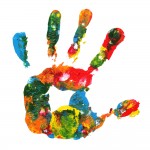
People with schizophrenia experience a wide range of symptoms, which are broadly categorised into ‘positive’ symptoms (e.g. hallucinations and delusions) and ‘negative’ symptoms (e.g. lethargy, lack of motivation and poor attention). Evidence shows that positive symptoms can be well managed with antipsychotic drugs, which also reduce the chances of relapse, but these medications can have side effects and tend to have no impact on negative symptoms.
Talking treatments and other social interventions are often used in combination with drug therapies to help people with schizophrenia improve their general health and well-being. A variety of creative activities have been suggested as good options to try, including art therapy, and many evidence-based guidelines recommend that these activities are offered to people with schizophrenia.
This well conducted randomised controlled trial (known as the MATISSE study – Multicenter study of Art Therapy In Schizophrenia: Systematic Evaluation) published in the BMJ set out to evaluate the clinical effectiveness of group art therapy for people with schizophrenia and to test whether any benefits exceed those of an active control treatment.
417 people were recruited from community based mental health and social care services in four centres in England and Northern Ireland and randomised to either:
- 12 months of weekly group art therapy plus standard care
- 12 months of weekly activity groups plus standard care
- 12 months of standard care
The art therapy group received weekly 90 minute sessions. Art therapy was carried out in keeping with recommendations of the British Association of Art Therapists and aimed to enhance self expression, improve emotional health, and help people develop better interpersonal functioning. The activity group met weekly and played board games, watched and discussed DVDs, and visited local cafes. They were not allowed to use any art materials.
Outcomes were measured at 12 and 24 months and they included:
- Primary outcomes
- Global functioning
- Positive and negative symptoms of schizophrenia
- Secondary outcomes
- Group attendance
- Social functioning
- Adherence to drug therapy
- Satisfaction with care
- Mental well-being
- Quality of life
Here’s what they found:
- The levels of attendance at the art therapy and activity group sessions was low. The figures for attending at least one group during the year were 61% for art therapy and 52% for activity group sessions
- Primary outcomes across the three treatment groups were the same
- When measured at 24 months, the global functioning adjusted mean difference between art therapy and standard care was −0.9 (95% confidence interval −3.8 to 2.1). The positive and negative syndrome scale difference was 0.7 (−3.1 to 4.6)
- Secondary outcomes at 12 and 24 months did not differ between the art therapy group and standard care
The researchers concluded:
These findings challenge current national treatment guidelines that clinicians should consider referring all people with schizophrenia for arts therapies. Although we cannot rule out the possibility that group art therapy benefits people with schizophrenia who are motivated to use this treatment, our findings suggest that it does not lead to improved patient outcomes when offered to most people with this disorder.
Crawford, MJ et al. Group art therapy as an adjunctive treatment for people with schizophrenia: multicentre pragmatic randomised trial. BMJ 2012;344:e846
